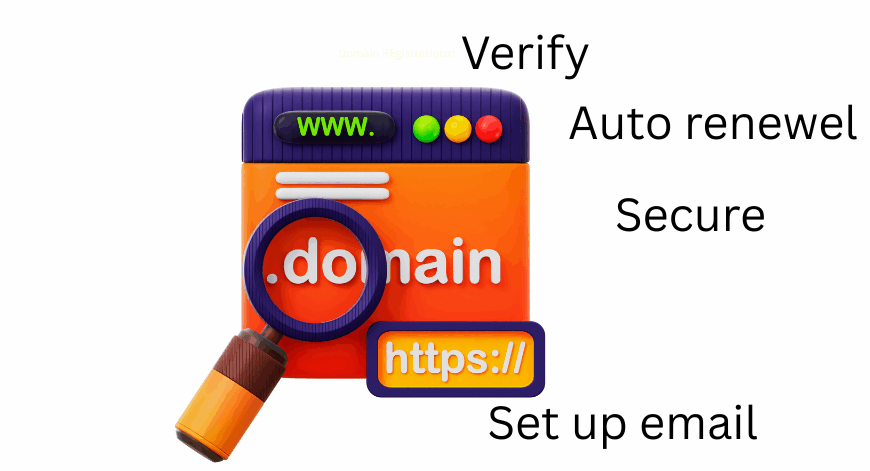I thought I was being clever.
Last year, I bought my first domain name for my small online perfume shop. It cost me just £9.99. The hosting company asked if I wanted to add domain privacy for an extra £5.
I skipped it.
I told myself it was only a small site and no one would care about my details.
That tiny domain privacy mistake ended up being one of the most expensive lessons of my life.
The Excitement of a New Beginning
I still remember the excitement of seeing my name connected to a real website.
I had worked for weeks picking a name, creating product photos, and building my brand. When I saw my domain live on the internet, it felt like magic.
I told my friends and even shared it on Facebook. I thought I was unstoppable.
The Small Box I Ignored
When registering, the form mentioned adding domain privacy protection to hide personal details from public records.
I didn’t even know what WHOIS meant.
I thought I wasn’t famous, so there was no need to hide.
So, I unchecked the box and saved £5.
Or so I thought.
The Spam Started Small
A few days later, I got an email that looked official.
It said my site was not verified with Google. Then came another one claiming I needed to renew my domain.
Another email came from someone offering SEO help.
Then another one offered a free logo redesign.
My inbox was filling up every morning.
The Calls Came Next
Soon, my phone started ringing with unknown numbers.
People claimed they could make my site rank higher on Google or said my website had a virus.
I started wondering how they got my number.
That’s when a friend told me about WHOIS.
The Shocking Discovery

I went to whois.domaintools.com and typed my domain name.
There it was my full name, home address, email, and phone number all visible to anyone.
No password needed. No warning.
Anyone could copy and use that information. And they already had.
How It Got Worse
At first, it was just spam emails and calls.
Then, one morning, I got an invoice in my inbox for £499 for website optimization services. It looked so real that I almost paid it.
Then came another fake bill, this time pretending to be from my domain registrar asking for £899 to renew my domain.
Scammers were using my public WHOIS data to send targeted scams.
They knew my name, my domain, and my contact info.
The £10,000 Lesson
Over the next six months, I made several mistakes.
I clicked on a few phishing links.
I paid £2,000 to a fake marketing expert.
I lost another £3,500 to fake security support when my site went down.
Add in lost time, refunds, and stress the total hit nearly £10,000.
All because I didn’t pay that £5 for domain privacy.
What Domain Privacy Actually Does

Domain privacy, also called WHOIS protection, hides your personal information from public view.
Instead of showing your name, address, and email, it shows your registrar’s.
So when scammers scrape WHOIS databases looking for targets, they don’t find you.
Without privacy, your data is exposed. With it, you’re protected.
That’s the £5 difference.
What I Wish I Knew
I wish someone had told me that every domain owner’s info becomes public by default.
I wish I had known that spammers scrape that data daily to build email and call lists.
And I wish I’d realized how cheap protection was.
A single cup of coffee could have saved me from £10,000 worth of trouble.
Trying to Clean Up
Once I figured it out, I tried to fix everything.
I changed my email and phone number.
I even moved houses later that year because my old address had been used in business listings I never made.
It took months to recover.
Even today, I still get random spam messages that started with that domain privacy mistake.
A Wake-Up Call for Small Business Owners
If you run a small business, you’re probably juggling sales, marketing, deliveries, and taxes.
Privacy might not feel important.
But scammers love small businesses.
They know you don’t have an IT team.
They know you’ll answer calls yourself.
And they know your WHOIS info gives them everything they need to look legitimate.
The Day I Switched to Truehost
After that chaos, I moved my domain to Truehost UK.
Their system made domain privacy simple and clear.
The £5 protection was added automatically no confusing boxes to tick.
I’ve been with them ever since.
And not a single spam call since then.
How to Check If You’re Exposed
Here’s what I’d tell any business owner or freelancer:
Go to a WHOIS lookup site like ICANN Lookup.
Type your domain name.
See what shows up.
If you see your name, phone, or email your info is public.
You’re one search away from being on a spammer’s list.
Don’t Make My £10,000 Mistake
If you remember one thing from my story, let it be this:
Domain privacy isn’t a luxury. It’s protection.
You lock your house door, right? Then lock your digital door too.
It’s cheaper than lunch and it can save you from a mountain of stress.
Visit Truehost UK’s Domain Privacy Protection page and check your domain today.
Don’t wait until your inbox turns into a war zone.
The Emotional Cost No One Talks About
It wasn’t just the money.
It was the feeling of being watched.
Every time I got a new spam email, I wondered what else they knew about me.
I felt unsafe using my own email.
I had to explain to customers that fake invoices weren’t from me.
I lost trust.
And trust takes time to rebuild.
The Hidden Side of the Internet
Most new website owners don’t realize that the moment you register a domain, your details go into a global database.
That database is public.
Scammers use automated tools to scan it 24/7, collecting emails and phone numbers.
That’s how they know exactly who to target.
It’s like walking around with your home address printed on your T-shirt.
You wouldn’t do that offline, so don’t do it online either.
Lessons Learned
I used to think domain privacy was just a money grab.
Now I know it’s insurance.
A £5 investment that can save thousands.
Since switching to Truehost, I’ve registered three more domains each with privacy protection.
I sleep better knowing my info is hidden.
What You Can Do Now
If you already have a domain, you can still fix it.
Just log in to your registrar’s dashboard.
Look for “Add Domain Privacy” or “WHOIS Protection.”
If it’s not there, move your domain to a provider that includes it, like Truehost UK.
It takes minutes to activate.
Once you do, your public info disappears from WHOIS within a day or two.
And the spam will slowly fade away.

Final Thoughts
That domain privacy mistake taught me something about online life.
The internet is open, but that doesn’t mean you should be.
Every click, every email, every form can expose you if you’re not careful.
But you don’t need to live in fear just make smart moves.
Pay the small price for privacy now, or pay a big one later.
I learned the hard way so you don’t have to.
Before you close this page, go to Truehost UK and turn on domain privacy protection.
Because £5 can save you from £10,000 in regret.
External Resources:
- ICANN WHOIS Lookup — check if your info is public.
- National Cyber Security Centre (UK) — learn how to protect your business from online scams.
Internal Resource:
- Truehost Blog learn more about domain safety and online protection.
Call to Action:
Don’t repeat my domain privacy mistake.
Protect your personal info now with Truehost Domain Privacy Protection.
A £5 choice could save you £10,000 and your peace of mind.



